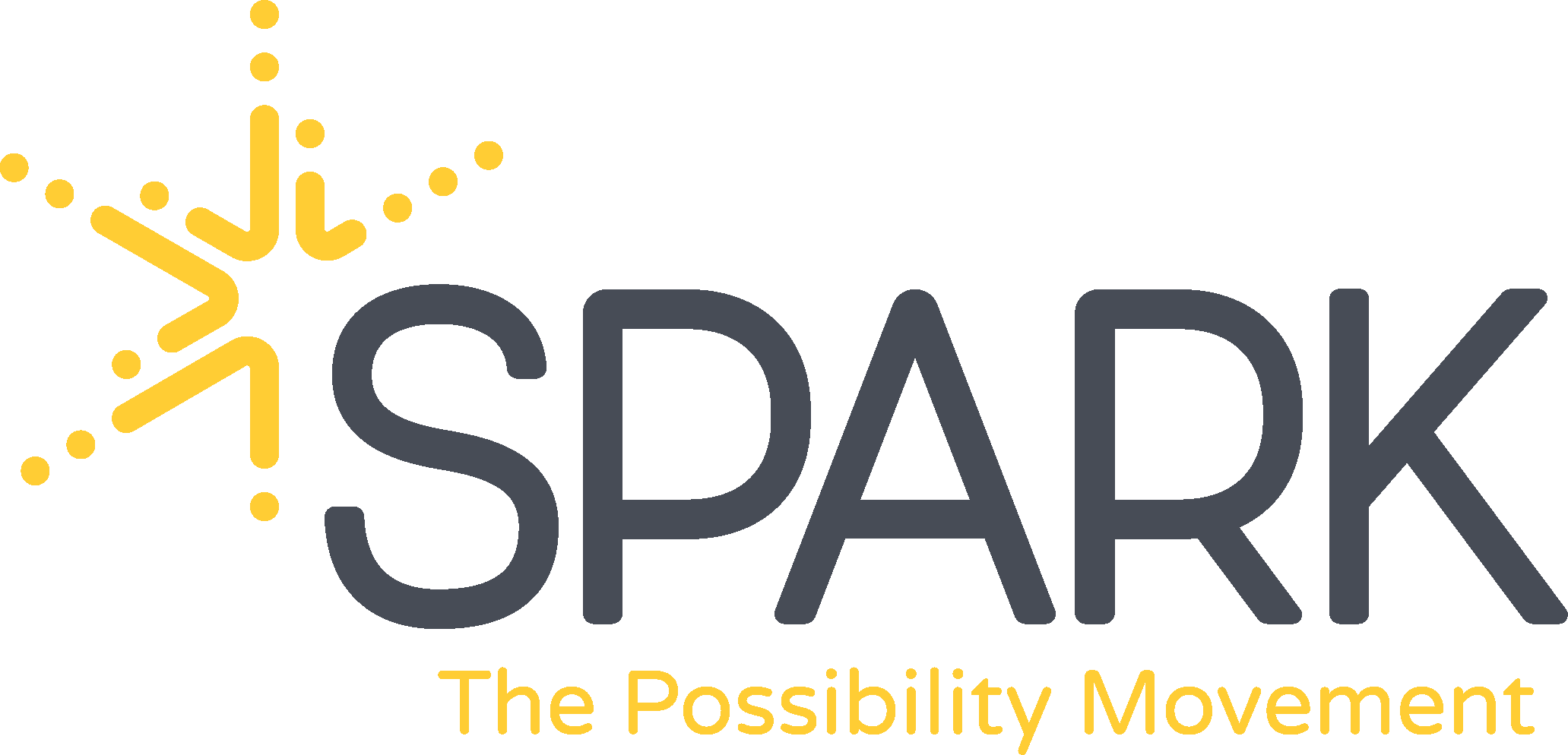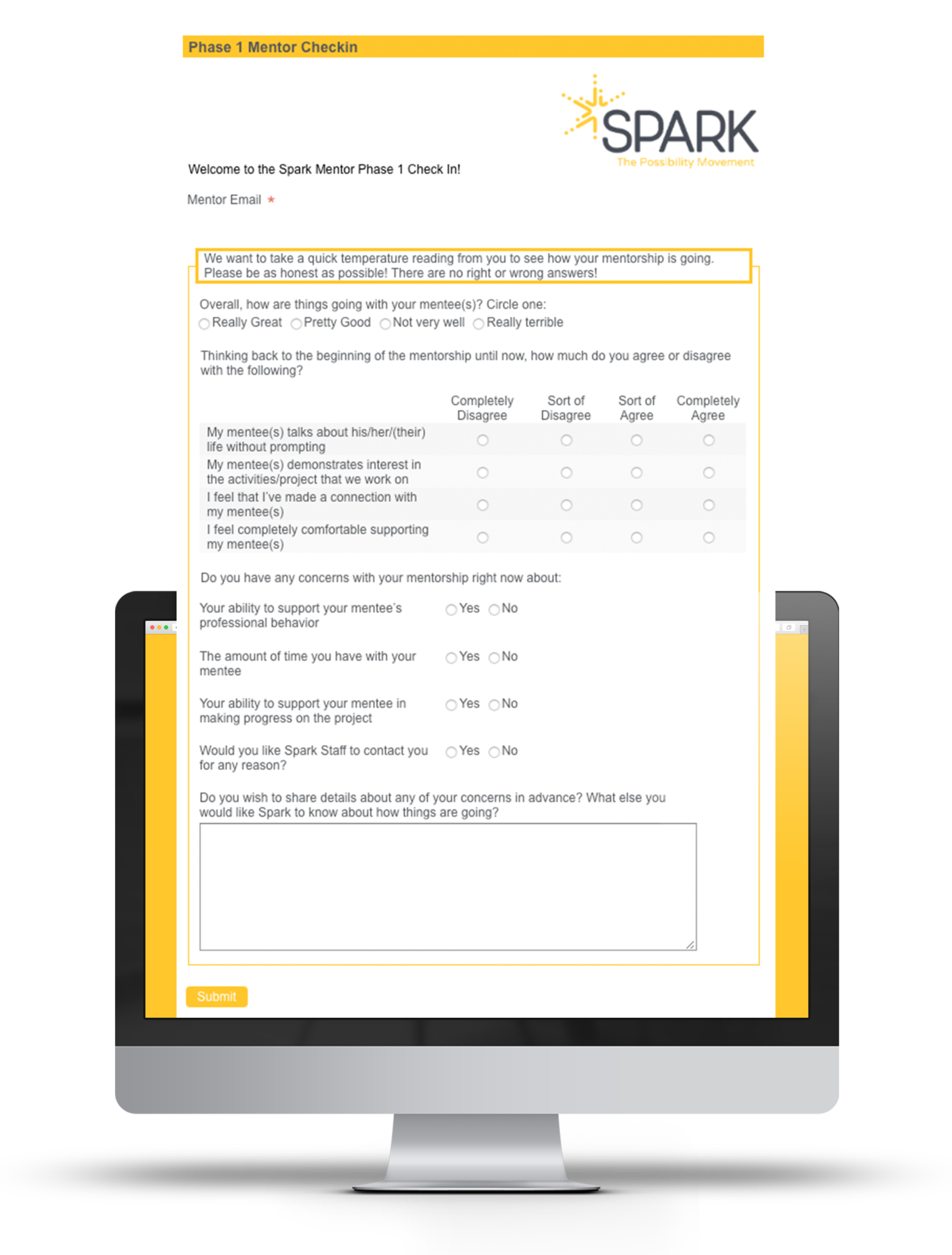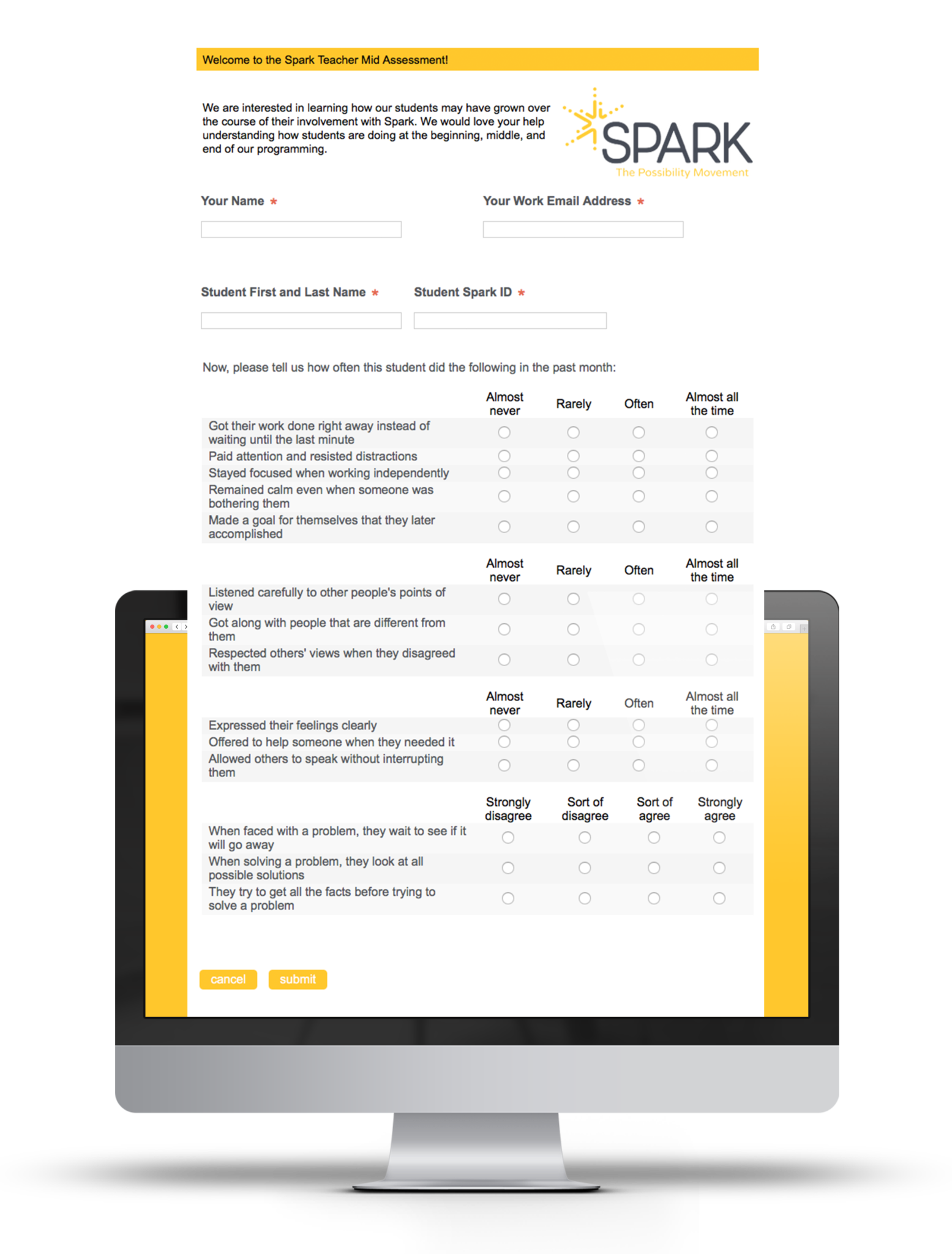

The numbers
50
Active forms in use across the organization
70%
Time reduction for creating Salesforce records (estimated)
1,300
Students and mentors involved (estimated)
Use Cases
Program Evaluation Forms
Easy-to-use forms help with impact evaluation
Spark distributes evaluation forms to their corporate mentors and partners throughout the duration of the program. These forms request basic check-in information and gauge how the mentor feels about a student’s participation and progress.

Mentor Application Process
Prefilled forms eliminate extra data entry for repeat mentors
FormAssembly also comes into play during the mentor application process. These forms collect information about a future mentor’s skills and interests, so that they can be matched to particular students. Features such as the Prefill Connector help eliminate redundant data collection when a mentor chooses to return for another year or program.
Classroom Teacher Forms
Respondents use one simple form to initiate the program process
Spark uses FormAssembly to collect information directly from middle school teachers at the beginning of each program year. Teachers are asked to submit roughly 15-20 student assessments, which were previously distributed on paper and later entered manually by Spark staff. Kolodner estimated a time savings of roughly 35-40 minutes for their staff, who no longer have to enter data from teachers. FormAssembly provides a means to quickly check off one of the steps in their program process.

Display-Only Forms
Display-only forms serve as an effective outbound communication tool
Kolodner developed a unique use for FormAssembly so that Spark could improve outgoing communication to corporate partners. Each company that they work alongside has an appointed “ambassador,” who often requires information about which employees from their company have applied to be mentors. Instead of asking Spark staff to check on this at every interval, Kolodner developed a two-part form.
The first page requires the ambassador’s email and region. Upon submission, the form looks up the ambassador and finds others in their company that are on the current mentor recruitment campaign in Salesforce. The second page redirects to a prefilled form that uses repeating fields to show who from the company has applied for the mentorship program. With the removal of any ‘Submit’ buttons, the forms serve as an effective outbound communication tool.
Don’t just collect data
— leverage it.
